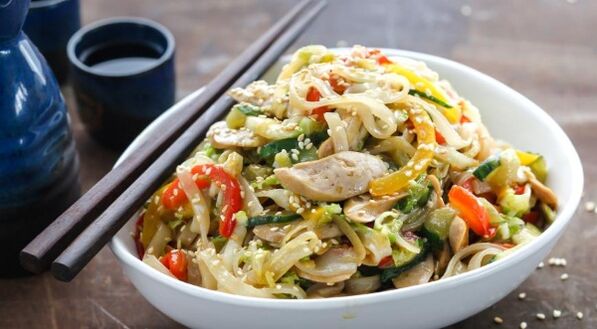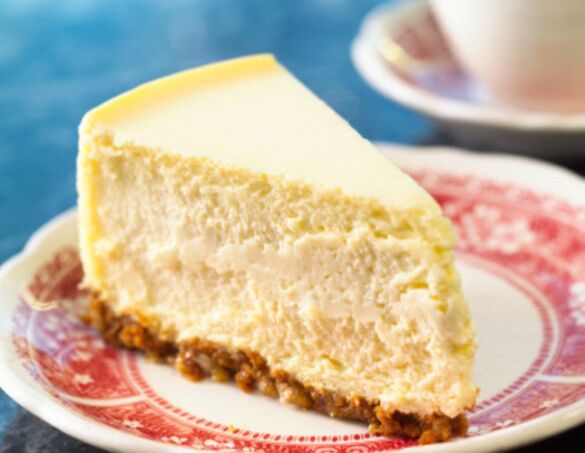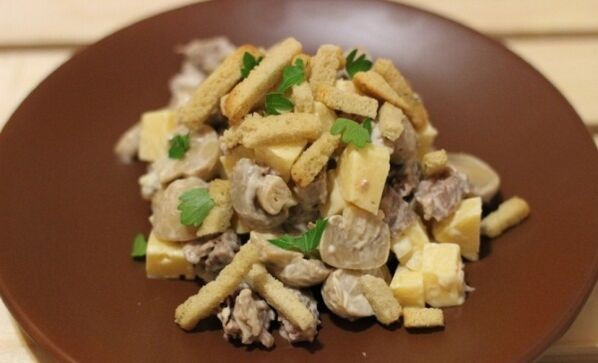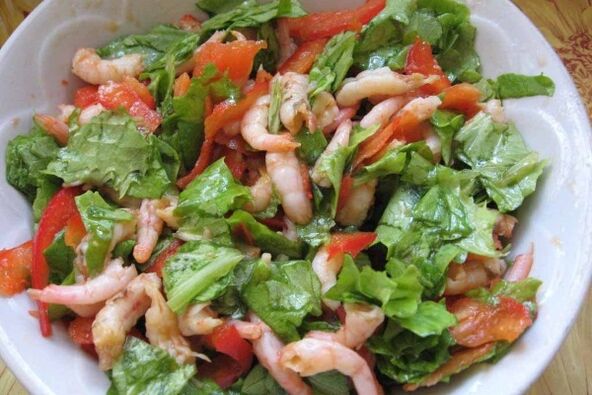What is gluten?
The Essence of a Gluten-Free Diet
Who is this diet recommended for?
- Bronchial Asthma;
- Parkinson's Disease;
- diabetes;
- autoimmune hepatitis;
- obesity;
- Atherosclerosis;
- Allergy to plant proteins;
- psoriasis;
- Frequent migraines;
- Chronic constipation.
benefit
- energy saturation;
- Combines vitamins and trace elements;
- Increase hemoglobin;
- Strengthens immune and skeletal systems;
- Helps in faster absorption of vitamins in the body;
- Normalize intestinal function;
- Recovery is quick after long illness and surgery.
The advantages and disadvantages of
| advantage | defect |
|---|---|
|
|
Gluten-free diet helps with weight loss
- Promote hair growth and enhance hair strength;
- Reduce various rashes, unevenness, and roughness;
- improve one's overall condition;
- Improve performance;
- weight loss;
- normalizes metabolic processes;
- Keeps you feeling full for longer.

- Group B;
- D;
- calcium;
- gland;
- Some minerals.
Gluten-free diet for children
- fresh and cooked vegetables/fruit;
- eggs of all birds;
- nuts and seeds;
- legumes;
- Fresh meat/fish, no marinades added;
- seafood;
- dairy products;
- Gluten-free baked goods/breads;
- Preserved fruits, fruit drinks, cocoa, tea;
- Flower/linden honey;
- Not all types of grains.
- buckwheat
- corn
- rice
- Millet
- Cassava
- soybeans
- It’s best to store gluten-free products in specially designated compartments in cabinets;
- A dedicated baking knife should be used;
- Always wash your hands when preparing food and regular meals for your child;
- Use separate cutlery;
- Keep harmful products out of the reach of children;
- If the gluten content of a product is questionable, the product should not be given to children.

Allowed and prohibited products
| Healthy Food | Hazardous products |
|---|---|
|
|
Banned foods contain high amounts of gluten.
Banned food additives
- E160——carotene, dye;
- E150 - sugar (caramel) color;
- E150c - Ammonia caramel;
- E150d - ammonium sulfate caramel (food coloring);
- E411 - Oatmeal gum (used in cosmetics industry);
- E636 - Maltol (confectionery products);
- E471 - Stabilizer (used to extend the shelf life of products);
- E953 – Isomalt (added to grilled meats, preserves, chocolate, chewing gum, ice cream);
- E965 – Maltitol (added to candies, chocolate, chewing gum).
What foods can be included in a gluten-free diet?
- vegetable/broth soup;
- porridge;
- gluten-free baked goods;
- fruit puree/salad;
- vegetable stew;
- Meatballs, steaks;
- Cheese and any fruit;
- casseroles;
- Scrambled eggs, fried eggs, poached eggs.
Gluten Free Diet Weekly Menu
| Day 1 of the week |
|
| Day of the week 2 |
|
| Day of the week 3 |
|
| Day of the week 4 |
|
| 5th day of the week |
|
| Day of the week 6 |
|
| 7th day of the week |
|
Gluten-free diet for diabetes
Dangers of a gluten-free diet
- Lack of vitamins B and D;
- Vitamin malabsorption.
Contraindications
- Pregnant;
- anorexia;
- acute and chronic diseases;
- Postoperative period;
- menopause;
- hormonal changes;
- endocrine diseases;
- heart disease.
First course recipes for a gluten-free diet
vegetable noodles
- Tomatoes – 3-4;
- Bell pepper – 2;
- Bulb;
- ½ carrot;
- rice flour;
- chicken soup.

- Wash and chop vegetables.
- Bring broth to boil.
- Add vegetables and cook for 10 minutes.
- Add noodles and cook until cooked through.
- Add salt to taste.
mushroom soup
- Mushrooms – 0. 5 kg;
- ½ carrot;
- Bulb;
- Potatoes – 2-3 pcs
- Wash and chop the mushrooms.
- Bring water to a boil in a pot.
- Add mushrooms.
- Chop carrots, onions, potatoes. Add to pan.
- Add salt to taste.
- Simmer the soup until it is completely cooked.
Second course
fish in french
- Tilapia/catfish fillets – 1 kg;
- Tomatoes – 5;
- Bulb;
- Eggs – 7-8;
- Bell pepper – 2;
- Potatoes – 5;
- Milk/Cream – 0. 5 liters;
- cheese;
- Salt.

- Thaw, clean and cut the fish. Fill the entire pot with it.
- Wash and chop vegetables.
- Place tomatoes on the second layer, green peppers on the third layer, onions on the fourth layer, and potatoes on the fifth layer.
- Mix eggs with cream/milk and add salt. Fill everything up.
- Add salt to taste.
- Bake in the oven for 40-50 minutes until cooked through.
- Finally, sprinkle with cheese.
stew
- Zucchini – 2 pieces;
- Eggplant – 2 pieces;
- Tomatoes – 3-4;
- ½ onion;
- Bell pepper – 3;
- Homemade tomatoes – 100 ml;
- Salt.
- Wash vegetables.
- Cut into cubes.
- Pour into hot skillet. Fry for 15-20 minutes.
- Pour in the tomatoes. Cook for another 20 minutes.
- Add salt to taste.
dessert
Casserole without flour
- Cheese – 800 g;
- Sugar – 1 cup;
- Eggs – 3;
- Potato starch - 2 tbsp. lake;
- Salt.

- Add an egg to the cheese. Stir until smooth.
- Crack 2 eggs and separate the yolks from the whites.
- Pour sugar (half a cup) into the container with egg yolks. beat.
- Beat egg whites until airy peaks form. With salt.
- Add the egg yolks to the cheese. Add remaining sugar and potato starch. beat.
- Pour in egg whites. Mix everything.
- Pour the dough into the oiled mold.
- Bake at 180 degrees for 30-40 minutes.
waffle
- Eggs – 4;
- Rice noodles – 125 g;
- Cornflour – 125 g;
- Sunflower oil – 150 ml;
- Water – 150 ml;
- Salt;
- Containers with high sides.
- Crack the eggs into a bowl. Stir until foam forms.
- Add salt and rice flour. mix.
- Add cornmeal. beat.
- Carefully pour in the oil and water. mix.
- bake.
- Can be eaten with honey, jam or salt.
salad
Mushroom and meat salad
- Mushrooms – 500 g;
- Chicken (breast) – 200 g;
- Lettuce leaves – 6-7;
- Biscuits – 100 g;
- Cheese – 100 g;
- Sour cream – 1 tbsp. lake

- Wash and chop the mushrooms. saute.
- Fry chicken and add salt.
- Cut lettuce and cheese.
- Prepare cookies. Add to salad.
- Place all ingredients in a bowl and mix with sour cream and salt.
seafood salad
- Mussels – 100 g;
- Sirtaki – 100 g;
- Tomatoes – 3-4;
- lemon juice;
- Salt;
- Olive oil – 1 tbsp. spoon.

- Place mussels in salad container.
- Cut Sirtaki into cubes.
- Wash the tomatoes and cut into cubes.
- Add salt, lemon juice and season with olive oil.
food prices
result
Comment
- The intestines are cleansed;
- Chronic diseases disappear;
- A feeling of lightness appears;
- weight loss;
- Improved skin condition;
- The risk of allergic reactions is reduced.

































